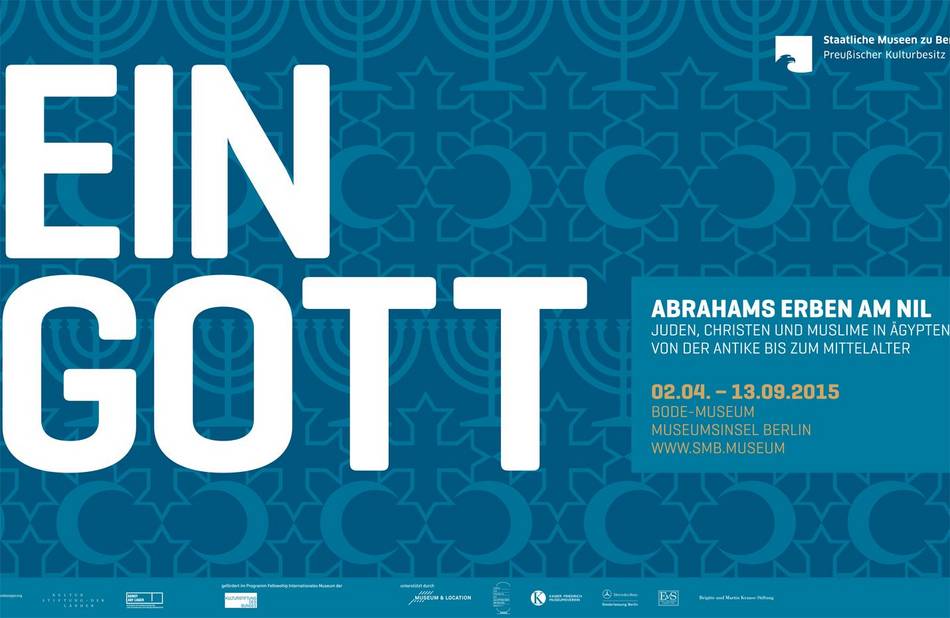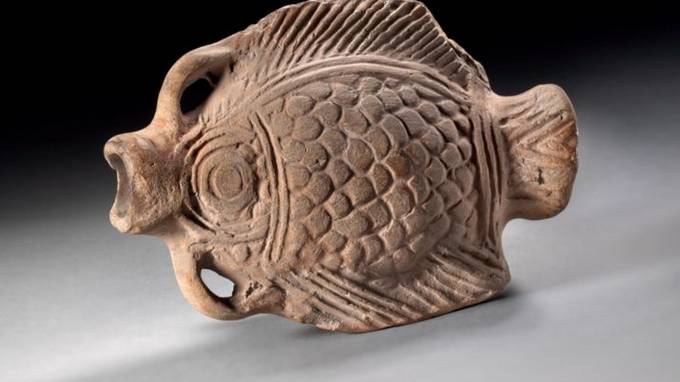One God – Descendants of Abraham on the Nile
A special exhibition on Judaism, Christianity and Islam in Egypt from late antiquity to the early Middle Ages

The three great world religions, Judaism, Christianity and Islam, coexisted in Egypt for the longest period of time – from late antiquity to the Middle Ages. In cooperation with three collections of the Berlin State Museums, the fellow Dr. Mary Missak Kupelian prepared a special exhibition highlighting the similarities and differences of the three world religions. The exhibition featured some 250 archaeological and religious artefacts which illustrated the important areas of human life: birth, education, private and religious celebrations, food, clothing, work and death.
With pieces from the Egyptian Museum and Papyrus Collection, the Museum of Islamic Art, the Sculpture Collection and the Museum of Byzantine Art, the exhibition showed similarities between the three religions and cultures in greater detail. With regard to the recent events of the "Arab Spring", the project also hoped to contribute to mutual understanding and more intercultural tolerance. The fellow from Egypt, Dr. Mary Missak Kupelian, first fostered contacts with Egyptian museums. In addition to her knowledge of the language, she also brought a non-Christian perspective into the scientific-curatorial preparation work. Dr. Mary Missak Kupelian worked as a co-editor of the exhibition catalogue and held various lectures in an accompanying symposium.
Exhibition "One God - Abraham's Legacy on the Nile"
'One God - Abraham's Legacy on the Nile (external link, opens in a new window)' took a closer look at the religious life and day-to-day coexistence of the three faith communities in Egypt, from the time of the Romans all the way up to the Fatimid caliphate in the 12th century. The exhibition showed that much can be learned from archaeological finds that reflect the largely peaceful coexistence of the world religions over the course of many centuries, especially when viewed in today's political climate. On show were over 250 objects from Egypt's rich cultural heritage. Many come from the collections of the Staatliche Museen zu Berlin and Staatsbibliothek zu Berlin and have never gone on show before. The Berlin objects were enriched in number by outstanding pieces from the British Museum, Victoria and Albert Museum, the Louvre, the Cambridge University Library and other collections.
The exhibition was not exclusively about religion; it also traced the everyday life of people in Egypt over hundreds of years. Objects on view reflected daily life, starting with birth, childhood, and school. In popular belief, magic also played an important role in all three religious communities. The exhibition ended with the funeral rites and concepts of the afterlife among Jews, Christians, and Muslims.
The exhibition took its name from Abraham, the original father and archetype for monotheistic faith and a powerful common thread linking Judaism, Christianity, and Islam.
The exhibition was the result of a collaboration between three SMB collections: Ägyptisches Museum und Papyrussammlung, Museum für Islamische Kunst, and Skulpturensammlung und Museum für Byzantinische Kunst.
Contact
Skulpturensammlung und Museum für Byzantinische Kunst
Staatliche Museen zu Berlin - Stiftung Preußischer Kulturbesitz
Geschwister-Scholl-Str. 6
10117 Berlin

